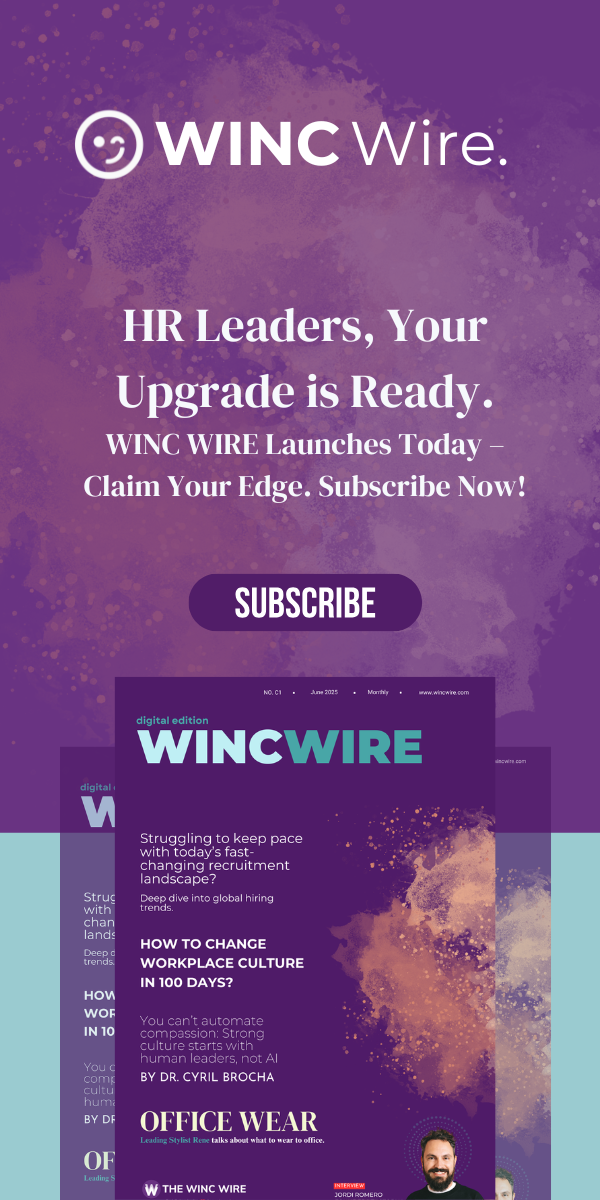The future isn’t something that arrives passively — it’s something we consciously architect. Every decision we make today lays the foundation for tomorrow’s teams, cultures, and capabilities. And yet, many leadership development initiatives remain rooted in legacy frameworks that feel more like timeworn manuals than blueprints for growth.
Let’s call it what it is: traditional development models are tired. Classroom-based sessions, rigid competency matrices, and linear growth plans are no match for the pace and complexity of today’s world of work.
What we need now is a more nuanced, adaptive, and human-centred approach one that reflects the messy realities of modern leadership. In my experience leading change across industries — from the hospitality floor to the boardrooms of global automotive giants — real leadership isn’t taught; it’s cultivated.
Here’s how we can build the leaders of tomorrow by focusing on five future-ready strategies.
1. Evolve the Mindset: From Knowledge Holders to System Thinkers
Great leaders aren’t defined by what they know but by how they think. It’s not about filling minds — it’s about expanding them.
The most effective leadership growth happens vertically. That means nurturing how individuals interpret the world around them, especially in the face of complexity. This is the shift from tactical execution to strategic foresight.
How to foster vertical development:
- Stretch projects that nudge leaders into ambiguity, helping them build resilience and reflective muscle.
- Protected space for introspection — leadership journaling, coaching debriefs, or quiet strategic sprints.
In my time supporting Allwyn’s UK expansion, it wasn’t technical acumen that differentiated rising stars — it was their ability to reframe challenges through a systems lens.
When we expand our mindset, we expand our capacity. And in a volatile environment, that capacity becomes our compass.
2. Champion Neurodiversity: Unlock Untapped Brilliance
One in five of us processes the world differently. That’s not a problem to fix it’s potential to be realised.
Neurodivergent individuals often excel under pressure, bring unmatched focus to detail, or view problems through entirely novel lenses. These aren’t edge cases, they’re competitive advantages waiting to be embraced.
Practical shifts to enable inclusion:
- Audit recruitment processes — are job specs truly inclusive or just repackaged conformity?
- Equip line managers with tools to collaborate, not just accommodate.
- Design systems that flex from onboarding to team dynamics.
In one automotive HR audit I led, we discovered that productivity increased by 27% in departments where sensory-friendly workspaces were trialled.
Inclusion isn’t charity it’s strategy. Diverse brains spark divergent thinking. And divergent thinking drives innovation.
3. Reinvigorate Development Plans: Make Growth Matter
Too many personal development plans feel like they were written by robots. Tick-box targets. Annual reviews. A sense of obligation, not inspiration.
Let’s humanise growth. Let’s treat development not as a corporate task, but as a shared adventure.
How to energise growth plans:
- Start with the person, not the performance. What are their values? What gets them up in the morning?
- Balance “have-to” objectives with “want-to” explorations — make room for passion alongside performance.
- Keep plans live and agile, not laminated and forgotten.
I recall mentoring a rising leader in Asia Pacific who rebuilt her plan around a single personal value: courage. Within 12 months, she’d launched two internal innovations and grown her team by 60%.
When growth is personal, commitment becomes cultural.
4. Accelerate Decision-Making Agility: Train for Movement, Not Perfection
In today’s world, standing still is the riskiest move of all. Agility is no longer a “nice-to-have”; it’s the backbone of sustainable leadership.
Agile leaders don’t rush — they respond. They understand the trade-off between action and perfection. They know when to leap and when to learn.
Build agility through:
- Embedding a “test and learn” culture — minimum viable decisions are often better than overbaked strategies.
- Training in context-based decision-making — frameworks that help leaders move fast, not freeze.
In one retail transformation I oversaw, teams that adopted a weekly reflection-feedback loop outpaced their peers by 40% in hitting change targets.
Agility isn’t about speed alone — it’s about intentional, adaptive movement.
5. Embed Active Reflection: Turn Experience into Wisdom
Experience, on its own, teaches nothing. It’s reflected experience that transforms leaders.
We’ve all worked with leaders who’ve spent ten years doing the same thing, and others who’ve learned more in one turbulent quarter than most do in a decade. The difference? Reflection.
Make reflection habitual:
- Use reflection logs after major decisions or projects — what worked, what didn’t, what will shift next time.
- Design in pause points — debriefs, retrospectives, or even walk-and-talks.
One hospitality executive I coached turned daily post-shift journaling into his most powerful leadership tool. Within six months, team turnover halved.
Reflection isn’t passive — it’s generative. It sharpens instincts, builds emotional intelligence, and sustains clarity under pressure.
Final Thought: The Leaders We Need Are Already Here — We Just Need to Cultivate Them
Leadership isn’t waiting on the horizon — it’s growing, today, in your teams, your conversations, your everyday moments.
To prepare for the challenges ahead, we must move beyond tick-box training and build leadership pathways that are dynamic, inclusive, and deeply human.
So let’s evolve mindsets. Let’s embrace difference. Let’s energise growth. Let’s lead with agility. And above all, let’s create space for reflection.
The future is being written today — let’s make sure it’s penned by leaders who are ready to meet it with wisdom, strength, and heart.
Let’s Stay Connected
If this resonated with you, it’s only the beginning. I regularly share reflections, insights, and strategies for building people-first organisations and future-ready cultures. You can follow me on LinkedIn for real-time updates on leadership, HR transformation, and organisational performance.
Together, we can shape workplaces where people — and potential — flourish.




